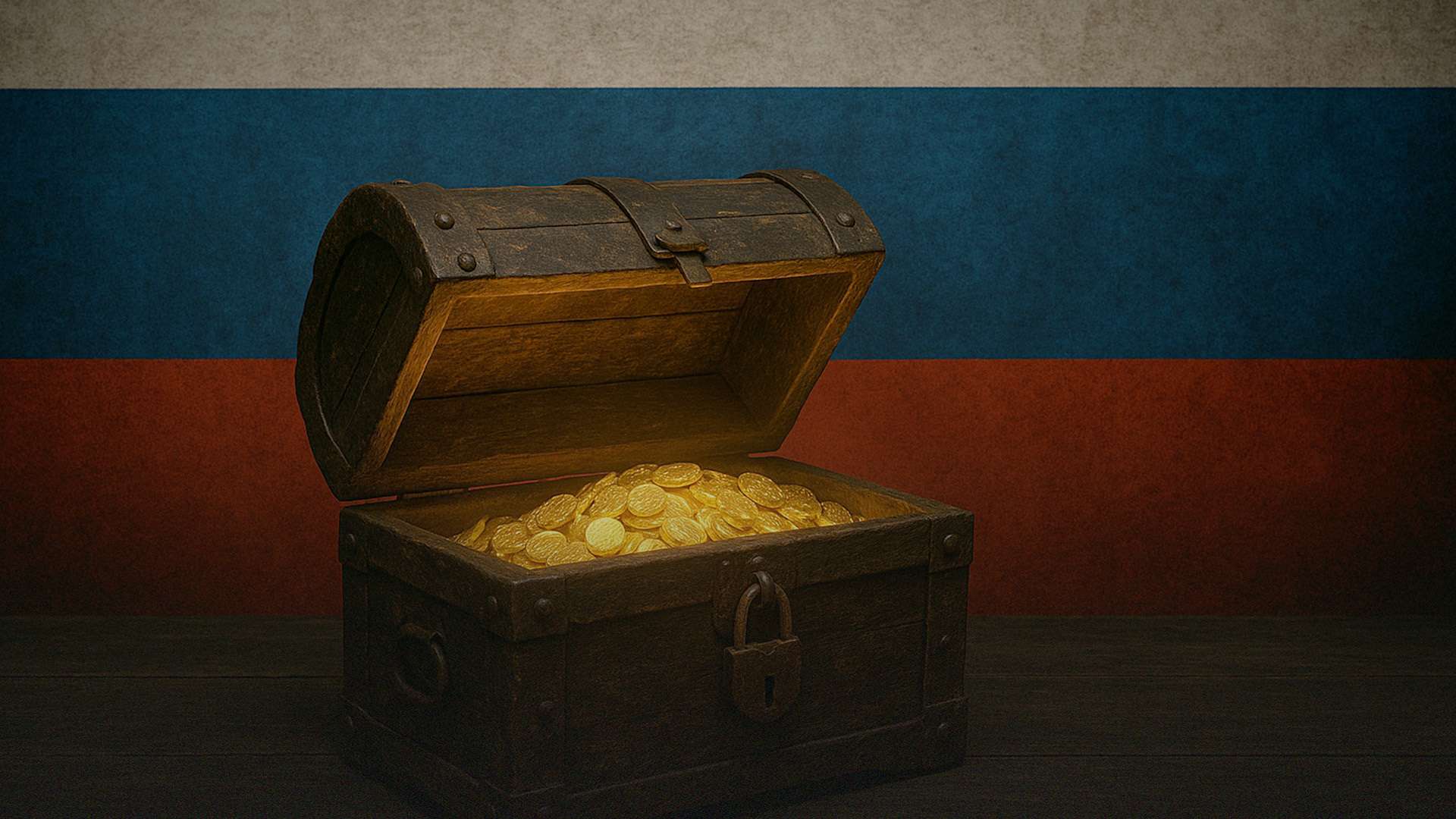Russian Treasure

When Russia invaded Ukraine in February 2022, $300 billion of Russian assets held in foreign countries were immediately frozen, the majority of which (about $200 billion) are within Europe. So far, despite pressure from the US, EU leaders have been reluctant to channel these funds into Ukraine’s defense and reconstruction, the latter of which is expected to cost $520 billion. Now that Donald Trump has turned his back on Ukraine, the idea of putting these frozen assets to work is being discussed more seriously—and there are good reasons for Europe to adopt a hawkish stance, as the US has done.
In April 2024, the US Congress passed the Rebuilding Economic Prosperity and Opportunity for Ukrainians (REPO) Act, which allowed Joe Biden to liquidate the $5 billion of frozen Russian money held in the US and place it in a specially created Ukraine Support Fund. But to proceed, the US requires the agreement of key allies such as the G7 and the 27-member EU, support that has so far proved elusive.
During the final days of his administration, Biden was still trying to convince European governments to release the Russian funds, most of which are held by the Belgian securities depository Euroclear. One official in the outgoing government told CNN that it would send a strong message to Vladimir Putin: “If you want your money back, you’re going to have to come talk.” Last month, US senators from both the Republican and Democratic Parties signed a letter to Trump, urging him to use “all the financial tools at [his] disposal to increase pressure on Russia to end the war,” including the frozen Russian billions. Trump has yet to take a stance.
There are signs that Europe is warming to the idea. Last June, as part of the Extraordinary Revenue Acceleration (ERA) scheme, the G7—including three EU countries—agreed to provide $50 billion for Ukraine, secured against the interest earned annually by the Russian funds held in Europe. In March, the UK transferred $970 million to Kyiv, the first of three installments pledged under the deal; but national differences are already threatening to destabilize the ERA initiative.
One major problem is the terms on which different countries are offering their portions of the loan. The US, Canada, and Japan wouldn’t demand repayment from Ukraine if the Russian assets stopped generating profits, but the EU would—leaving a war-torn country with an extra $40 billion to repay. Another concern is the requirement for unanimous renewal of the EU’s sanctions on Russia every six months. The US is worried that, if they’re lifted—as they almost were last month, before a deal was made with Hungary—the revenue stream guaranteeing the loan would dry up.
Volodymyr Zelensky’s disastrous meeting with Trump in the White House back in February, where he was repeatedly told he’s “not in a good position,” has infused the debate with urgency. Spain’s foreign minister, José Manuel Albares, has suggested that the frozen assets in Europe should be used as an advance on the reparations that Russia will eventually owe Ukraine (though whether Russia would agree to as part of a ceasefire is highly unlikely). Poland, the Czech Republic, and Estonia support the idea of seizing Russian funds, and last month, the French parliament passed a non-binding resolution urging the EU to act. The motion was approved despite previous concerns from French president Emmanuel Macron about legal uncertainties.
Macron isn’t the only leader who’s reluctant to use the Russian funds. European Central Bank president Christine Lagarde has so far resisted the suggestion, as has British Prime Minister Keir Starmer—although, like Trump, he faces cross-party pressure to seize Britain’s share of the Russian bounty, estimated at £25 billion ($33 billion). France’s finance minister, Éric Lombard, warns that confiscation could damage international trust in the euro, while critics of the REPO Act have the same concerns about the dollar. Belgian Prime Minister Bart de Wever claims that seizure would be an “act of war” carrying “systemic risks to the entire financial world system.” But advocates of seizure argue that this overstates the potential reaction from countries such as China, which has too much to lose economically to retaliate, and puts fiscal interests ahead of enforcing international law.
Though complicated, the legal obstacles to asset seizure are not insurmountable. The central issue under international law is whether confiscation would qualify as a countermeasure—a non-violent but otherwise illegal response to a state’s breach of international obligations. Two points remain uncertain: first, whether seizure—rather than a refusal to unfreeze the funds—would overextend the scope of a countermeasure; and second, whether countermeasures can be pursued by third parties on behalf of a victim—in this case, whether the US, G7, or EU, none of which are directly under attack, can impose countermeasures in support of Ukraine. A recent EU report concluded that they can, as long as conditions are attached—such as loaning the funds to Ukraine, to be repaid only if Russia agrees to reparations. The report also argued that third-party countermeasures have become common practice, and that the mass-freezing of Russian assets in 2022 itself counted as one.
Another factor in support of asset seizure is Putin’s limited ability to retaliate. He signed a decree in May 2024 authorizing the confiscation of US assets held in Russia, which was extended earlier this year to include those of all so-called unfriendly states. But the drop in foreign investment in Russia since the invasion of Ukraine means that retaliation of the same magnitude is unfeasible.
The political and legal complexities of confiscating Russia’s frozen funds cannot be ignored. But neither can the compelling reasons for doing so, especially in light of Trump’s withdrawal of support for Ukraine. As one Ukrainian lawyer and politician wrote last year: “Western leaders must demonstrate that international law is not just symbolic, but a set of rules under which those who break them are held responsible—regardless of economic interests.” It could be argued that the precedent this would set is worth the risk—not only to hold Russia accountable, but also to send a warning to other states with expansionist ambitions. Extreme circumstances call for extreme countermeasures.
The post Russian Treasure was first published by the Foundation for Economic Education, and is republished here with permission. Please support their efforts.



